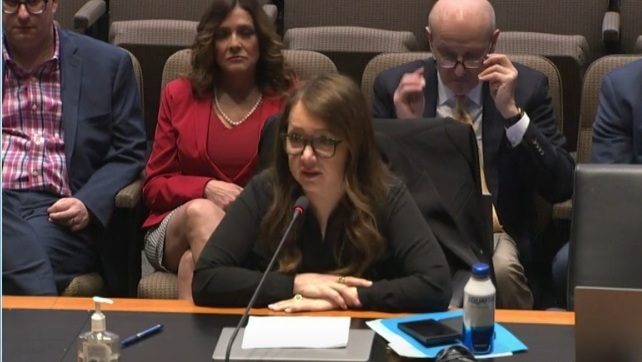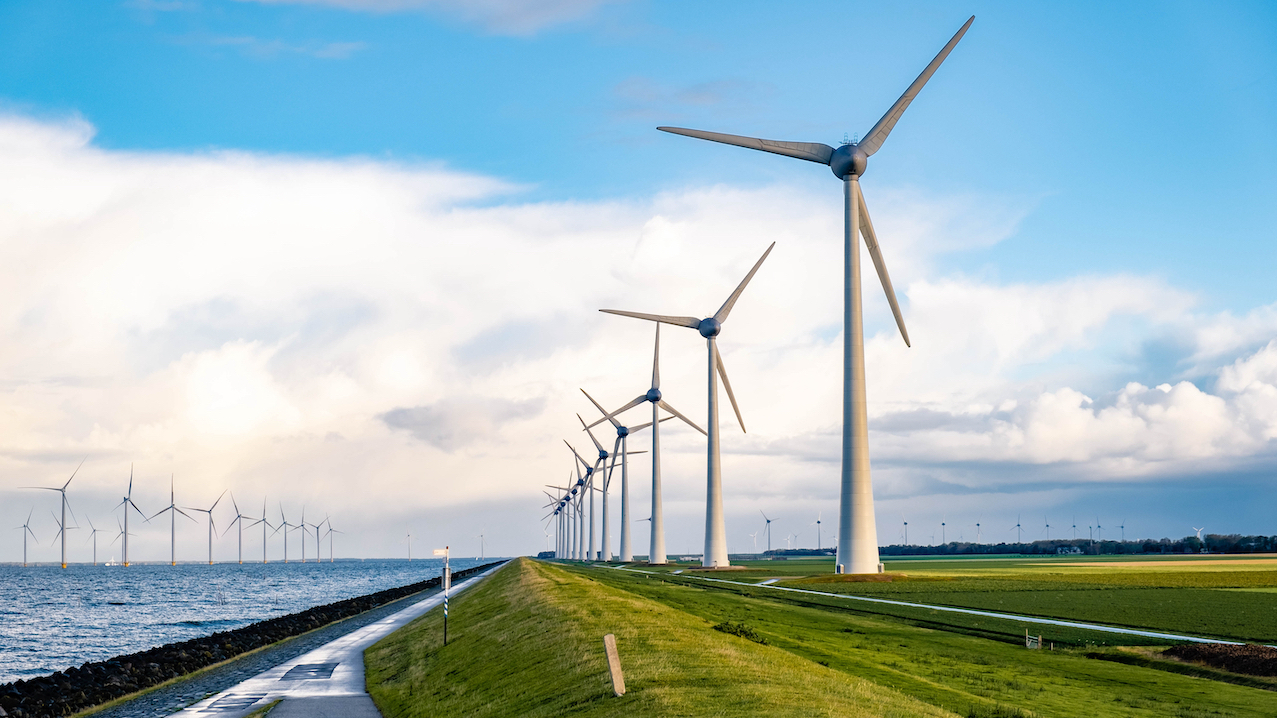
Stephanie Maier: net zero must come from ‘carrot and stick’ regulation
GAM’s head of responsible investment discusses the opportunities ahead and the most recent policy developments for net zero.
As GAM Investments scales up its own ESG capabilities, head of responsible investment Stephanie Maier is looking for new opportunities against the backdrop of legislation that is beginning to drive the net-zero transition.
Previously director for responsible investment at HSBC Global Asset Management for over three years, Maier also held the posts of head of corporate responsibility and responsible investment strategy at Aviva Investors between 2010 and 2017. She also sat on the Global Steering Committee of the ClimateAction100+ initiative and was previously vice-chair of the UK Sustainable Investment and Finance Association.
At GAM she is responsible for leading an ESG strategy, and has furthered her reputation as an expert in the responsible investment space through speaking at events such as the 2022 UN Principles for Responsible Investment (UN PRI) conference in Barcelona.
To look out for in 2023
Some commentators have suggested that the year ahead will witness a return to form for green investments, such green bonds which suffered a rare bearish downturn in 2022. Tim Crawmer of Payden & Rygel has already predicted that sectors such as the automotive industry will lead the green rebound.
For Maier herself, the very real threat of climate change also presents opportunity: “We're starting to see the significant investment opportunities that come from addressing the challenge of transitioning to a net-zero economy, and also adapting to the physical changes that we're already seeing as a result of climate change.
“We're also starting to see policy responses, which are carrot and stick depending on different markets. This is driving a meaningful acceleration in the shifting of capital, and that's where a lot of those opportunities lie.”
These investment opportunities may yet be lopsided. By geography, the US has suddenly gained the upper hand through green subsidies found in the Inflation Reduction Act (IRA), while a recent UK-government commissioned paper bemoaned the transition finance the nation was currently missing out on.
Asset owner mandates
As Maier mentioned at the UN PRI event in November last year, asset owner mandates can be a force encouraging ESG-linked activities in the financial sector. These instructions detailing how a pool of assets may be invested can, according to the UN PRI, be a “valuable and often underutilised tool for asset owners to signal ESG requirements to asset managers”.
Maier explains her own position: “In the institutional space, clients can be looking for specifics. We have a lot of conversations with asset owners who have set net-zero targets, but they’re actually looking to see that commitment translate more concretely into the mandates they're running, looking to see what will turn that dial in terms of ensuring that capital does start flowing towards responsible investment.”
GAM Investments itself looks to be an asset manager with strong credentials in the net-zero space. GAM’s interim targets for 2030 include having 75% of assets under management in material sectors aligned or aligning with net zero, achieving a 50% reduction in financed carbon emissions from a 2019 baseline, and engaging with at least 90% of financed emissions to ensure they are on a net-zero pathway.
In an area such as biodiversity, there is still a less consistent standard in the quality of ESG data and disclosure.
A wave of ESG legislation
Investment managers are keeping a keen eye on reporting and disclosure projects when it comes to ESG. This follows from developments such as the ongoing Task-Force for Climate Related Financial Disclosures (TCFD), the elevation of the reporting threshold of the Sustainable Finance Disclosure Regulation (SFDR) from January this year, and the development of regulation for ESG labelling in the UK.
Even after extensive downgrades in the sector, GAM Investments still retains a fund rated as Article 9 (impact) in the SFDR – the Sustainable Climate Bond Fund. This is a high conviction fund allocating to green and sustainability bonds with positive environmental impact, issued by the European financial sector.
However, according to Maier, “in an area such as biodiversity, there is still a less consistent standard in the quality of ESG data and disclosure”.
There are also real economy policy drivers, such as the IRA passed last year in the US, and the EU countering with a proposed Net-Zero Industry Act, announced this month at the World Economic Forum in Davos.
Of such policy developments, Maier says: “Some of the resulting investment is going to generate a reduction in cost curve for new technologies, as has been seen in China.”
ESG data
Much of the regulation, such as the TCFD, has been implemented with the desire to increase the amount of ESG data being provided, while bodies such as the International Sustainability Standards Board look to implement consistency in this data across jurisdictions.
“Over the last few years there has been an increase in the quantity of ESG data that’s being reported by companies. You’re also starting to see an increase in quality in a number of those areas in terms of what companies are reporting on and the detail that’s behind a lot of that, whether that’s driven by regulation or investor engagement.
“Just because ESG data is still certainly not perfect and has some significant gaps in areas, does not mean it cannot be used to inform decisions. What we do need to be wary of is that we don’t end up allowing some of those very large ESG data providers to completely shape the market through their particular kind of ratings,” says Maier.
In 2021, GAM released its first ESG Summary Report, including ESG rating and carbon intensity metrics, for 70% of its funds by AuM. In 2022, the firm introduced extended ESG reports and improving report coverage where possible depending on data availability.
GAM’s approach
During Maier’s time at GAM Investments, the firm has joined the Net Zero Asset Managers Initiative and became a signatory to the Powering Past Coal Alliance Finance Principles, which has recruited investors and government bodies in a drive to accelerate the transition from coal to cleaner energy.
Another important element for Maier is maintaining the balance between discrete yet linked elements of E, S and G when assessing whether an investment is in fact responsible: “Context is key when making investment decisions. This means looking at where a company is operating, what does the value chain look like, what's the competitive landscape.
“Depending on these different elements, certain ESG issues will be more or less material, as well as recognising that a lot of them are interrelated. Governance is key to ensuring that there's an appropriate culture that promotes sustainability, is risk managed, and has independence on the board.”
For 2022, a GAM compensation committee also agreed that sustainability should form a more explicit element of the strategic annual bonus scorecard component directly driving all of the firm’s group management board members’ annual remuneration.
Maier acknowledges that a key challenge for the whole sector is ensuring real-world impact and not just a paper decarbonisation of portfolios. Another challenge is engagement, with GAM continuing to have holdings in carbon-intensive industries.
“The net-zero target is predicated on engagement, and how to transition those sectors to decarbonise themselves. Carbon-intensive sectors are the ones that are going to need to transition and are also the ones putting a lot of capital towards that. They have that capital available, and are going to play an important part of how we get to net zero”, says Maier.



